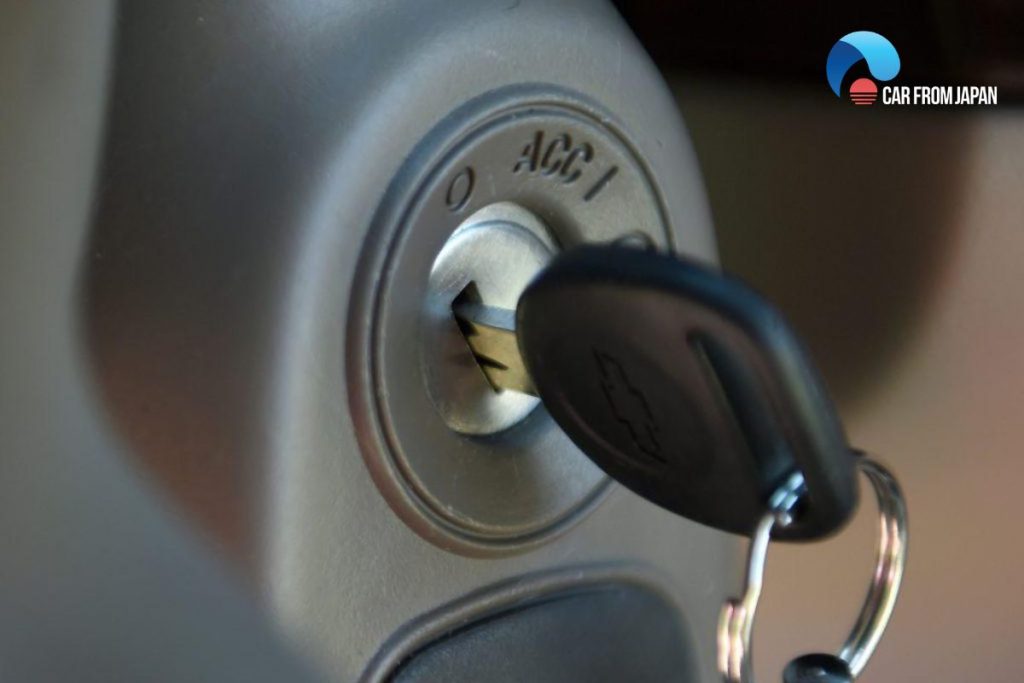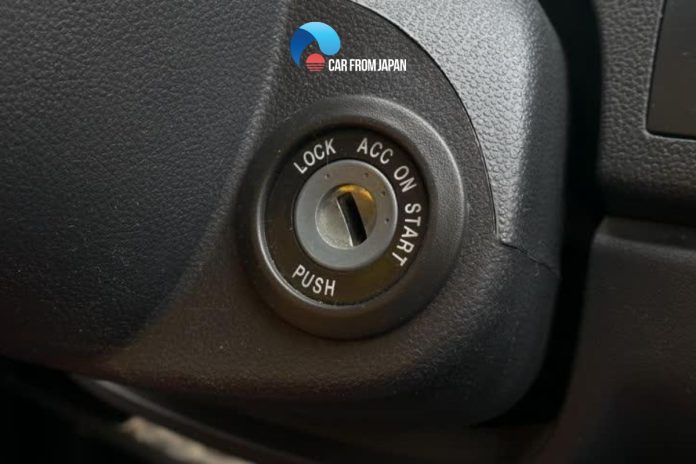Automobiles have a unique design ignition switch system. The switch controls all the necessary components in the vehicle.
You might be driving the cars for long and still not notice the mechanism behind it. There are different ignition switch positions in a car.
Traditional vehicles with standard ignition systems have four key positions. But modern vehicles have only 3 key positions. There is a specific action every time you turn on the ignition switch.
Modern vehicles have a smart key ignition system. That is why there is one less key position in it. The ignition switch is the major part of an automobile.
You will not be able to crank the engine with a bad or faulty ignition. It is important to keep this switch in the right shape!
Contents
- What Happens When You Turn On The Ignition Switch In A Car?
- FAQs on Turning On The Ignition Switch
- What role does the Engine Control Module (ECM) play when the ignition is turned on?
- Does the ignition switch have a connection to the vehicle’s security system?
- What is the significance of the pre-glow phase in diesel engines?
- What’s the “click” sound I hear when I turn the ignition but before I crank the engine?
- Is it true that the ignition switch powers different systems in sequence?
- Why do I smell fuel briefly after turning on the ignition?
- Why do some cars take longer to respond after turning the ignition?
- Can turning the ignition on and off repeatedly damage anything?
- The Bottom Line
What Happens When You Turn On The Ignition Switch In A Car?
The ignition switch is a crucial component of the car cabin. You cannot start the engine or turn on the accessories without an ignition switch.
In any case, drivers should not force the key or any tool inside the ignition switch. It might damage the entire ignition system, costing you trouble. Do not put extreme pressure while inserting the keys as well.
Let us find the mechanism behind four ignition positions here.
Lock – First Position
It is the first position of the ignition switch. The manufacturers describe the lock as the OFF position. You have to rotate the key clockwise to turn on the ignition switch. The lock position is to insert the keys only.
There is no effect on the steering wheel or other accessories in the lock position. You can take the keys out only in the lock position.

Accessory/Acc – Second Position
Wondering what does acc stand for in cars ignition system? It is the accessory mode. You can use some of the standard accessories in this mode.
The accessory or Acc is the second position in the ignition switch. Acc gives life to the radio, stereo, power windows, and seats.
ON Or Ignition – Third Position
The next one is the ignition position. All the electronic accessories come active when you turn on the ignition switch in this mode.
According to expert, the ON position is the default position in vehicles. You cannot remove the keys out of the ignition switch.
Start – Fourth Position
Now you can crank the engine. It is not the stopping position of the ignition system. The keys move back to ON or ignition, which is the default position.
The motor starter might damage if you stop the keys here for long. Let the keys turn to the default position once the engine starts.

See More: Two Different Methods to Test the Ignition Switch Perfectly
FAQs on Turning On The Ignition Switch
What role does the Engine Control Module (ECM) play when the ignition is turned on?
The ECM, powered by the ignition switch, manages the engine’s performance and efficiency by controlling fuel injection, ignition timing, and other critical functions.
Does the ignition switch have a connection to the vehicle’s security system?
Yes, modern vehicles often integrate the ignition switch with the security system.
The switch communicates with the vehicle’s anti-theft system to ensure proper key authorization.
What is the significance of the pre-glow phase in diesel engines?
In diesel engines, the pre-glow phase, activated when the ignition is turned on, heats up glow plugs.
This helps achieve efficient combustion, especially in colder temperatures.
What’s the “click” sound I hear when I turn the ignition but before I crank the engine?
That’s usually the fuel pump relay or starter relay engaging, and in some vehicles, it’s also the throttle body resetting its position.
Is it true that the ignition switch powers different systems in sequence?
Yes. It’s not just an “on/off” switch. Modern ignition switches activate accessories, then ECU/immobilizer systems, then prime the fuel system before cranking.
Why do I smell fuel briefly after turning on the ignition?
That can be a sign of a leaky fuel injector or vapor system. The fuel pump primes the system on ignition, which may release unburnt vapors if there’s a leak.
Why do some cars take longer to respond after turning the ignition?
Delayed response could be due to sensor calibration (like steering angle or throttle body), fuel system pressurization, or slow ECU wake-up time.
Can turning the ignition on and off repeatedly damage anything?
Frequent cycling can wear down relays, flood the engine (in older cars), or confuse the ECU.
It’s best to let each system finish initializing before retrying!
Check out this video from JAES Company to learn more about the ignition key in your car!
The Bottom Line
It is all that happens when you turn on the ignition switch. Hopefully, this gives you a better understanding of the ignition switch and its mechanism.
For more insightful Car maintenance tips, follow Car From Japan today!



